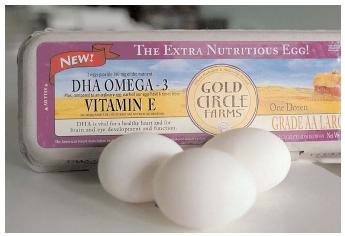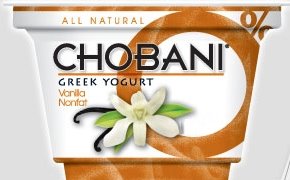Filed under: Nutrition
I often have people ask me how I set up my own diet, so this is for everyone who wants to know. Also this blog was inspired by the Precision Nutrition Blog on Cassandra Forsythe-Pribanic where they showed her nutritional intake and exercise for the day. So I have decided to post my nutrition intake for the day, and my training log is located on TheFitCast forum for those interested. I am currently training on a 3-day total body split with 1 day of med ball/plyo/sprinting/strongman work with the goal being increase in strength and mass. I will try to make this as detailed as possible.
Wake @ 8:00 am. Not too shabby huh.

Breakfast @ 8:30:
- 2 whole omega-3 eggs
- 1 cup egg whites
- 2 cups chopped broccoli, onions, red and green peppers
- Topped with 1oz shredded mozarella and some salsa.
- 1/2 cup old fashioned oats
- 1/2 cup frozen wild blueberries
- ~2 tbsp Barleans milled flax
- cinnamon to taste
- 1 banana
- 2 cups Stash Fusion White/Green Tea
- 2000 IU vitamin D
- Fish Oil = 1.8 grams EPA/DHA
- I love breakfast A LOT, I eat almost the same thing every morning, it is that good.
Snack @ 11:30:
- 1 6oz Chobani Vanilla Greek Yogurt
- 1/4 cup mixed nuts – almonds, walnuts, pecans
- 3 pieces reduced fat string cheese
- 9 baby carrots
- 2 tbsp Joseph’s original hummus
- 1 Stash Fusion White/Green Tea
- this is a staple snack for me, its easy, quick, requires no skill, and I just love it.

Lunch @ 2:30:
- 1 cup Friendship Digestive Health Cottage Cheese
- 1 scoop Vanilla Metabolic Drive
- 1/4 cup chopped walnuts
- 1/2 cup wild frozen blueberries
- 1 scoop Biotest Superfood
- 2 Stash Fusion Green/White Tea (just for you Eric)
- Absolutely fantastic, again meets my needs and requires no cooking or skill.
Dinner @ 5:00
- 1 cup Friendship Digestive Health Cottage Cheese (I like cottage cheese, get over it)
- 1/2 cup Libby canned pumpkin
- 1 scoop Vanilla MD
- 2 tbsp chopped walnuts
- 2 tbsp Barleans milled flax
- cinnamon to taste
- dash nutmeg
- 1 Stash Fusion Green/White Tea
- probably the greatest meal ever, I eat this every day. It is that good.
During Training @ 8:00:
- 1 scoop Wild Raspberry Surge
- 3.5 grams creatine
- 5 grams leucine
Post Training @ 9:30:
- 16oz organic whole fat milk
- 1 scoop chocolate whey
- 3.5 grams creatine
- 5 grams leucine
- 1 banana
- love the whole fat milk post training, get more cals in.

Post Training Meal @ 10:30 – 11:00:
- 4 slices Ezekiel bread – toasted
- 1 chicken breast
- 1.5 tbsp canola oil mayo
- 1 cup baby spinach
- 4 tomato slices
- mustard
- 1 Pink Lady apple
- 1 Red Tea (yeah I drink a lot of tea, what of it)
- Fish Oil = 1.8 grams EPA/DHA
- this sandwich is rare, but fantastic
Before Bed @ 12:30:
- 3 ZMA
- late night tonight, fairly normal eating day.
Been crushing the weights lately with the higher calorie, higher carb diet I’ve had the last few months. Weight is up about 10lbs in the last 2 months, so things are going according to plan. God I love food.
Filed under: Nutrition, Training
Just a quick one today. I was interviewed on the mid week show of The FitCast last week. It is a fitness and nutrition podcast hosted by Kevin Larrabee. It is the highest rated fitness and nutrition podcast on the internet, so if you want to hear 25 minutes of me rambling on about nutrition and what we do at CP check it out here.

You will be hearing a lot more about The FitCast and myself in the coming months, so stay tuned!
Filed under: Nutrition
I know almost all I have talked about so far has been food, but this is one of my favorites so it had to be done. Greek yogurt has become one of my new favorite foods for its higher protein content, thick creamy texture, high live and active culture content and cooking/recipe versatility.

Greek yogurt is much thicker than our traditional US yogurt. It is rich and creamy and much higher in protein while still retaining the traiditional sour taste of yogurt. The flavored versions are also much lower in carbs and sugar and higher in protein than the usual yogurt with just the right amount of sweetness.
Working at CP as the nutrition guy (we dont really have a title for that yet, might make Kevin work on that) Greek yogurt has by far been my greatest success story with the high school athletes. Part of my job is sitting down and having a small 10 minute chat with each client as they join, having a general nutrition discussion. With the high school athletes getting them to eat anything resembling a healthy diet requires some serious nutrition re-education, which we offer, but isn’t the point here. One of my recommendations is trying to get the kids to eat Greek yogurt. It is a quick easy snack they can bring to school, and most of them eat “regular” yogurt anyway, so it doesn’t seem so odd to them. Once they try it they are hooked, and it is one small step in the right direction. They have actually been my most receptive crowd to this “new” food. Some of my older personal training clients are resistant to yogurt in general, as it wasn’t really something they grew up with. Oddly enough I even learned about this in college, it is apparently well documented that older generations find yogurt to be abnormal from normal dietary foods. Though an odd fact, Greek yogurt is a great food to begin to incorporate and I would urge you all to give it a try.
Filed under: Nutrition
Everyone has heard by now about the importance of fiber. How awesome it is for your cholesterol, for your blood sugar, for your regularity. People often ask me how they can get more fiber in their diet. The usual answer of eat more fruit and veggies tends to falls on deaf ears, so here are some quick and easy dietary additions to increase your fiber intake. Just be sure drink plenty of water!
1. Eat more Milled Flax Seeds
Milled Flax is awesome. I am obsessed with the stuff, along with almost everything else on this list. It provides about 3 grams of omega-3′s per serving, along with 4 grams of fiber and can be added to a wide variety of recipes. Add 1-2 tbsp to your morning oatmeal, protein shakes, cottage cheese recipes, yogurt, etc. With its quality serving of heart healthy omega-3′s and fiber, this is one food you should be sure to add to your diet.

2. Eat more Pumpkin
This fantastic little veggie (or fruit, it’s really both) has 5 grams of fiber per 1/2 cup. It is also one of the worlds richest suppliers of bioavailable carotenoids, a powerful antioxidant family including beta-carotene, lutein, and lycopene. It is absolutely fantastic. A great way to incorporate more pumpkin is to make My Favorite Pumpkin Recipe.
3. Eat a better Cottage Cheese
Friendship Digestive Health Cottage Cheese is awesome! Not only is it thick and creamy, but it contains 3 grams of fiber per 1/2 cup! This is the only cottage cheese I know of that has any fiber at all. The fiber is from inulin, a soluble fiber that is incredibly versatile. It is extracted from chicory root, and has been shown to have many unique health benefits, including increasing the absorption of calcium and magnesium, and since it is a prebiotic, helping to support digestive health by stimulating the growth of beneficial gut bacteria. To make this cottage cheese even better, Friendship infused each 1/2 cup serving with 1 billion live active cultures from one of these beneficial gut bacteria, Bifidobacterium, making this my cottage cheese of choice.

4. Eat more Avocados
Another one of those is it a fruit or is it a vegetable conversations. It’s really both, but we will call it a veggie as most do. Avocados are known as a great source of healthy fat, but did you know that one avocado has, on average, 13 grams of fiber! While you do have to keep in mind that there is also about 30 grams of fat in an entire avocado, 20 of it is monounsaturated. Just add 1/2 avocado to sandwiches, salads, salsa, and more to get a great tasting high fiber veggie!

5. Eat some Low-Carb Wraps
Maybe they aren’t the worlds most perfect food, but they will help you keep your carbs lower, and get more fiber, while still giving you the illusion of having a sandwich. Not a bad combo in my book. Be careful with these because a lot of companies add in trans fats, so definitely make sure to check the ingredients list, no vegetable shortening or hydrogenated oils! Can be used for sandwiches, pizzas, burritos, fajitas, quesadillas and more. (plus avocados go great on low carb wrap sandwiches)
6. Bonus!
Here is a fun little food to have as a “treat” source of fiber. Kozy Shack No Sugar Added Chocolate Pudding. It is glorious. One pudding cup contains 11 grams of carbs, with 5 of it being fiber. The fiber is from inulin, just like in the Friendship Digestive Health Cottage Cheese. Although I am not a big fan of adding artificial sweeteners to your diet, and it does contain some Splenda®, a little bit here and there won’t hurt.
Bonus Kozy Shack Recipe: (fiber in parentheses)
1 cup Friendship Digestive Health Cottage Cheese (6)
1 Kozy Shack No Sugar Added Chocolate Pudding (5)
1 scoop Chocolate Metabolic Drive (1)
1 tbsp Barleans Forti Flax (2)
2 tbsp Natural Peanut Butter (2)
Thats a total of 16 grams of fiber. 1/3 of your daily needs. Not too shabby, considering it’s chocolate and peanut butter! Who can resist?

Filed under: Nutrition
Time and again I run into people who have taken their low carb diets so far that they avoid fruit at all costs and even some non-starchy veggies like carrots. It blows my mind. From a health perspective, eliminating an entire food category like fruit, especially fruit, from the diet is asinine. Unless you are actually trying to do a ketogenic diet where pretty much all carb sources are eliminated for a while, I assure you that some fruit consumption will not decrease your fat loss ability. It actually might even help.

While fruit does contain ample amounts of carbs, mainly in the form of sugar, it contains a plethora of vitamins, minerals, phytonutrients, antioxidants and loads of other awesome things we have yet to discover. Berries especially should never be taken out of someones diet unless they have some type of allergy. If you really think that consuming 1 small apple, 1/2 grapefruit, and 1/2 cup of frozen berries as a daily example would halt your fat loss progress, you are sadly mistaken. Grapefruit itself has been shown to aid in weight loss. Apples are great sources of soluble fiber to help maintain satiety, and berries are just nutritional powerhouses that should almost never be eliminated from the diet. Consuming copious amounts of fruit could potentially be detrimental to a low calorie, low carb diet, but eliminating it completely is not the answer. The solution is to consume most of your fruit when it will be best tolerated: at breakfast, and after exercise. This will help to ensure the carbs are either stored as glycogen, or oxidized as fuel, not stored as fat, while still getting in the innumerable health benefits of fruit consumption.
Many people not only eliminate the great and wonderful fruit category, they will eliminate many veggies as well. Now I can understand where many low carb dieters don’t want potatoes and corn in their diet, which are closer to grains than vegetables, but pushing out things like carrots and pumpkin is just going too far. If you are one of those people afraid of carrots because someone told you it’s GI is too high, then you are sadly misinformed. While carrots do have a fairly high score on the GI (glycemic index, which is a measure of how much a food raises your blood sugar after eating a standardized amount), it is really taken out of context. The GI is useful, but is does have many flaws, the greatest in this case being that it requires the tested food to have been consumed in an amount that would give 50 grams of usable carbohydrate. For carrots, this would require eating one and a half pounds! Most people probably don’t consume an entire bag or more of baby carrots in one sitting. A normal serving is about 9 baby carrots, which contains approximately 9 grams of carbs, 2 of which are fiber. Pumpkin is a similar vegetable (and is actually higher in carotenoids, a powerful antioxidant) that people should eat more of. Pumpkin also contains 9 grams of carbs per serving, with an impressive 5 grams of fiber. It is fast becoming one of my favorite vegetables.

So long story short when on a low carb diet, you can eat more than broccoli. Eat an assortment of fruits and veggies from the entire color spectrum, your body will thank you and your fat loss efforts will not be diminished, I promise.
My Favorite Pumpkin Recipe (borrowed and modified from Tony Gentilcore, through Mike Roussell):
1 cup Cottage Cheese (Friendship Digestive Health if you can find it)
1 scoop Vanilla Metabolic Drive Protein Powder
1/2 cup canned Pumpkin
1 tbsp Milled Flax Seed
1/2 tsp Cinnamon
dash Nutmeg
2 tbsp chopped Walnuts
and Enjoy the Pumpkin Goodness
This will get you about 52 grams Protein, 27 grams Carbohydrate, 15 grams Fiber, and 19 grams Fat for about 490 calories.
Filed under: Nutrition
Everyone who reads anything about nutrition knows the health benefits of consuming Green Tea. There seems to be news almost weekly about another reported benefit of Green Tea. It is known to help decrease the likelihood of cancer and cardiovascular disease, along with lowering LDL, blood pressure and blood glucose levels. Green Tea also increases metabolism, potentially aiding in fat loss. Sounds like the best drink ever!

The real Green vs. White Showdown!


Green Tea is made from mature leaves of Camellia sinensis, and they are usually withered prior to steaming them. Green Teas are very rich in catechins, though they are slightly different from White Tea’s, with slightly higher levels of oxidation. White Tea is also made from Camellia sinensis, though with buds and young leaves. Due to the minimal oxidation it undergoes White Tea retains the highest concentrations of specific polyphenols called catechins.

The main benefits of Green Tea come from epigallocatechin gallate (EGCG), a powerful antioxidant (and one of the polyphenol catechins from above). It is so powerful in fact, that it is approximately 100 times stronger than vitamin C, and twice as strong as resveratrol (resveratrol is that great polyphenol found in red wine that might be responsible for the “French Paradox”). EGCG is found in the highest concentrations in Green Tea because of the steaming process Green Tea undergoes, which helps to preserve the EGCG. For the most part, this probably isn’t news to you, but what might be news is that White Tea may be even better!
New research is showing that White Tea may have anti-viral and anti-bacterial properties, protection against skin cell damage, and the biggest of all: decrease risk of colon cancer. Though research on White Tea is small, it is growing rapidly. The study I want to discuss was done on mice at the Linus Pauling Institute at Oregon State. The mice used in the study were bred to be prone to intestinal tumors, and the control group given no treatment averaged about 30 tumors, which is insane. The treatment given was Green Tea, White Tea and sulindac, an NSAID often prescribed for protection against colon tumors. The mice given Green Tea saw their tumor rates drop from 30 to 17, the White Tea from 30 to 13 and mice given both sulindac and White Tea dropped from 30 to 6! What was also great was that the teas showed no side effects, unlike with high consumptions of NSAIDs. This demonstrated that consuming tea in conjuction with the NSAIDs is the most effective, will allow for lower dosage of the NSAIDs, which will decrease the dangerous side effects. This is some pretty incredible stuff, and really warrants the inclusion of White Tea consumption to me, as colon cancer is one of the world’s biggest killers.

While drinking massive amounts of tea, Green or White, will never be able to save us from a sedentary lifestyle and a fast food diet, 5 cups a day can certainly aid in many markers of long term health. In all honesty I actually think the debate between which is better, white or green, is rather silly. I vote for drinking both, and because of the emerging new info on the greatness of White Tea I have become a huge fan of Stash Fusion Green & White Tea. It is a combination of Green and White, making it to me, the best drink in town.




















Posted on November 25th, 2008 by Brian St. Pierre
9 Comments »